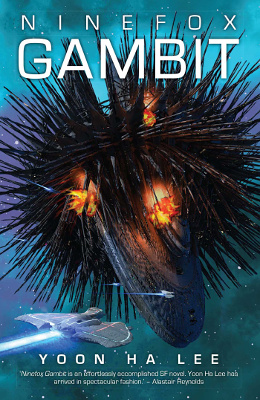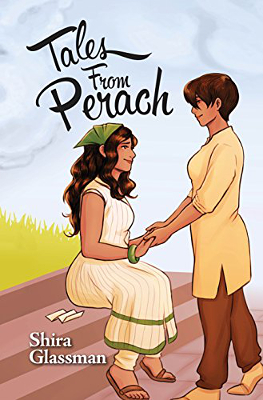 First Published: December, 2015
First Published: December, 2015
Genre: Urban Fantasy / Novel
Available: Amazon.com | Amazon UK | Smashwords
Eva is coping with the loss of her grandmother, Mary. When she finds Mary’s teenaged diaries, she has a mystery to unravel about a girl called Wren and the light of the world.
This wasn’t quite the novel I expected. It sounded like it’d be more epistolary, but the diary entries and other documents are scattered through occasionally. It’s mainly a standard narrative in structure. What I did expect were the two contrasting love stories. One is in the past, as Wren and Mary fall in love at a time when such things weren’t very public. The other is Eva meeting Liv, who works at a local bookstore. Along with Liv, the other bookstore workers are Theo (the owner) and Al (his son), who help Eva uncover more information about her grandmother.
Eva is depressed and has previously attempted suicide. The early part of the book is the hardest to read from this perspective, as her family did not react well. They fell into labelling her as selfish and cowardly. As it begins at Mary’s funeral, and then sorting Mary’s apartment with Eva’s parents, there’s no rest from this atmosphere. It makes Eva think about her suicide attempt, and also means Eva isn’t exactly the best version of herself. She’s very judgemental and quick to anger at the people who attend the funeral. Once her parents disappear off, things do calm down. Eva has her own space and isn’t constantly being forced to push back against her family’s reactions.
There are things I liked about the handling of depression. Medication is shown as something positive, rather than something to be avoided. Eva isn’t a different person when she takes it. She’s just a person who is better able to cope with daily tasks. There’s also discussion of generational differences in handling depression. Her older relatives don’t like to talk about such things and certainly wouldn’t want to admit they needed help.
There are some relationship hierarchy terms used with Mary and Wren, such as debating whether they are more than friends. Overall though, the narrative doesn’t devalue friendship. It’s not all about Eva falling in love with Liv. It’s important that Liv and Al are Eva’s friends. Eva’s time at the bookstore is about finding a support network, and overcoming her past issues making friends, rather than being a story about romantic love conquering all. This is a refreshing change from books that jettison all other relationships once the romance starts. Also, none of the relationships mean she suddenly doesn’t have depression anymore.
The identity of people in relationships is left open in some cases. Eva is bi (stated directly) and Liv appears to be a lesbian. But Eva is hesitant to assume an identity for Mary or Wren. At first, I wondered if this was going to be about not liking labels, but it was more that Eva acknowledged it was hard to know how people in the past would identify, and easy to erase by assuming. An example would be bi erasure by assuming Mary must be a lesbian based on one relationship.
There are a couple of Jewish supporting characters. The first, Elsie, is from Mary’s diaries. There’s very little about her, other than she seems something of a social rebel who doesn’t feel like she fits in the Jewish community. The other is Al from the bookstore.
Al has a grandmother from Ethiopia, who moved to Israel, then to the USA. She married an Ashkenazi Jewish man. The other side of the family are white. He’s described as someone who is clearly non-white, though in an ambiguous way. He’s Jewish in a casual does-the-major-holidays way. A more complex mixed race identity is a realistic thing that doesn’t get touched on much in fiction. However, it does come with a few microaggressions, like Eva assuming his family aren’t from the US (the “where are you from” discussion gets old really fast), and making special note of how his skin looks in the dark whenever the lights go out.
Religion and belief are mentioned, though the narrative doesn’t confirm or deny any particular religion. It’s more that the light of the world has been mentioned in many cultures, sometimes with religious connections. Eva’s family is agnostic from a Catholic background. She’s generally open to believing stuff and not hostile to people from other religious backgrounds.
The pacing didn’t entirely work. The beginning moves slowly, only really getting going once Eva’s parents leave her alone. The end moves very quickly, skipping over scenes that would have explained a lot. An example is Eva is apparently told something of the origin of the light of the world in a conversation, but this conversation is not shown. Instead, she offers the reader a few words to sum it up. I’d have liked to read that conservation, as it sounded important.
A few things didn’t work for me. The light of the world is repeated a lot, to the point of it being distracting. Using gross to describe women in relationships wasn’t something I liked, though I acknowledge there may be cultural differences in this being used as a cute saying between friends. Gross really only ever means bad things to me. The pressure to drink alcohol from Liv also stood out. She doesn’t consider reasons why Eva wouldn’t, other than age, and presses Eva about why she hasn’t been to such places. In Eva’s case, the main reason was social isolation, but there are a lot of reasons why someone might not drink or want to be in places where alcohol is served. There wasn’t much pushback about this in the narrative.
I enjoyed this more by the end than I thought I would. I didn’t like Eva’s early interactions with her parents, but there are fewer of those as it gets going. I did like her finding support with the bookstore crew. It’s a quieter take on urban fantasy, with a focus on personal stories and how the supernatural elements impact them. Note that it does describe suicide and that the historical love story is tragic. However, the book’s present is a lot more hopeful.
[A copy of this book was received from the publisher for review purposes]
 Series: Ladybirds for Grown-Ups
Series: Ladybirds for Grown-Ups Series: Machineries of Empire, #1
Series: Machineries of Empire, #1 Series: Mangoverse, #5
Series: Mangoverse, #5 First Published: 24th August, 2016
First Published: 24th August, 2016